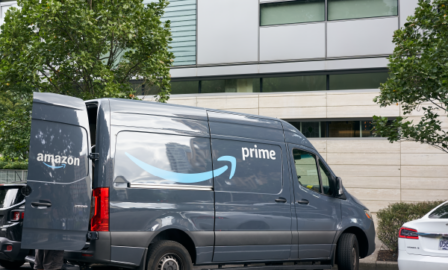Top 3 Things to Consider When Scaling Your Direct-to-Consumer Business Model
The global pandemic has fundamentally changed the way consumers purchase goods and services, forcing businesses to accelerate their direct-to-consumer business model. COVID-19-related stay-home orders in most major cities spanned months – leaving malls, shopping centers, and airports as ghost towns while consumers have opted to shop online as a safer alternative.
Forbes reports that there’s been an 129% year-over-year growth in US and Canadian eCommerce orders as of April, and 146% growth in online retail sales orders. As consumer patterns continue to change and stabilize as we navigate COVID, it is increasingly important for businesses to invest in digital sales channels. As such, the direct-to-consumer operating model has emerged for CPG companies as a key strategy to preempt future market disruptions.
A direct-to-consumer (DTC) operating model allows businesses to market and distribute products to consumers without the use of additional third parties, such as wholesalers or retailers. As more consumers grow comfortable and prefer online shopping to traditional brick-and-mortar purchases, DTC presents the opportunity to leverage direct relationships with consumers that are not dependent on brick-and-mortar retailers. Whether your company is a CPG brand that’s thinking of implementing DTC or blending your retail sales and DTC offerings, now is the time to get started or scale-up your direct-to-consumer business model and strategy.
Deploying a DTC channel provides a wealth of opportunities to build immediate relationships with consumers and learn how to enhance their experiences. When planning a DTC implementation or scale-up, it is important to think through the current state of the business and align on guiding principles to shape the best practices. The following areas are key focal points to any DTC implementation or scale-up planning:
Build the Right Foundation for Your eCommerce Platform
As more consumers shop online, technology is even more important than before. As such, companies looking to implement or innovate their DTC strategy should consider the impact of flexible eCommerce applications. While ensuring that consumers are able to access your web store across internet browsers etc., features such as mobile adaptability, eWallet compatibility, and opportunities for user personalization are important to establish company credibility, as well as deepen relationships with existing consumers. The more meaningful content created by your brand, the better your search engine optimization (SEO) can be.
Outside of the eCommerce webstore flexibility, there are several tactical considerations that impact a seamless DTC experience. When launching DTC, there will be an increase in small order quantities in comparison to lower order volume of large quantities to wholesalers. Take a deep look at your payment, tax, order management, and ERP capabilities. Launching DTC isn’t only about the commerce site, but also about the various integrations for payment processing, inventory management, delivery, and customer service tools that elevate the consumer experience.
Adjust Your Operational Model to Sustain Growth
Operations within DTC companies are critical to a business’ success and reputation with consumers. It’s best to weigh the cost options of owning your fulfilment network or outsourcing based on how much investment you are putting into the DTC channel and whether you want it to scale overtime. Two key facets of operations that will change when scaling a DTC business include logistics costs and order volume scale.
- Optimize Logistics to Reduce Cost: Where possible, leverage existing infrastructure for economies of scale, such as expanding existing 3PL services or extending existing carrier contracts to minimize incremental cost. This could serve better in the long run rather than maintaining separate infrastructure for each sales channel.
- Ensure Consumer Data Impacts the Rate of Scale: Take the time to understand the order volume needed to achieve target profitability for your new DTC sales channel. Once you’ve gotten into a steady state of online sales, it’s even more important to create linkages between consumer insights and order volume. This will allow for greater efficiencies when predicting future product demand and any adjustments to pack sizes.
The experience of the consumer journey is just as, if not more important than the quality of the product or service itself. Thoughtfully planning to address high touch point areas, such as customer service and infrastructure support, will positively affect your company’s value proposition and strengthen relationships with consumers.
Leverage Digital Marketing and Analytics to Understand Consumer Habits
The use of digital analytics makes it easier to identity patterns, track and analyze results. Often, digital analytics is presumed to be solely the Google Analytics tool, however there’s so much to explore here. DTC companies should think through the following guiding questions:
- How do I determine what and how much I’m going to spend on each marketing channel?
- How do I know what is the return on every dollar I spend on marketing?
Conversion rates are a great example – a DTC company’s biggest challenge can be the lack of insight on conversion rate if they don’t own the site. In practice, this looks like companies utilizing marketing spend in retailers or partners’ site, with no full disclosure on the ROI. So, although the spend may have increased product revenue, it’s unclear if there was any ROI based on the conversion rate.
If your organization is seeking to fully leverage consumer purchasing data to drive decisions, consider going all-in and owning your DTC channel website. Those who only outsource to partners like Amazon or big box retailers like Target or Walmart may not fully have the ownership they need to make informed decisions and track metrics.
Companies working towards a balanced direct-to-consumer business model can sometimes miss out on the opportunity to leverage tools to make informed marketing spend decisions. Businesses should be able to determine which marketing channels yielded the greatest ROI, so they know where to invest vs draw back spend. Without knowing data points like traffic sources to measure where consumers are coming from across the web, many DTC companies are often left in the dark with only surface level information like website clicks and social engagement analytics. Multichannel DTC companies that allocate significant marketing spend across the board can end up allocating funds instead of playing a guessing game.
Next Steps for Your Direct-to-Consumer Business Model
As we work together to think through what the future of CPG sales looks like now and into the future, the landscape continues to evolve every day. Clarkston’s digital enablement professionals have seen the success that disciplined investments in people, processes, and technology can make for manufacturers of all sizes. Are you a business who wants to invest in the future of retail sales or make changes to your strategy to ensure you’re prepared for a changing market? Contact Clarkston Consulting today to let us help you roadmap your business for a successful future in retail.
Subscribe to Clarkston's Insights
Contributions by Gopal Krishnan, Jasmine Ponder, Idoia Hidalgo.



